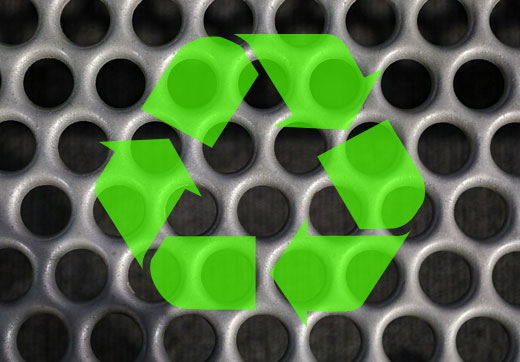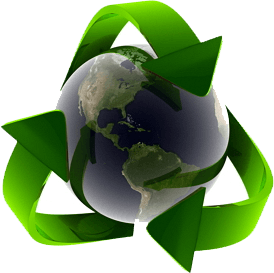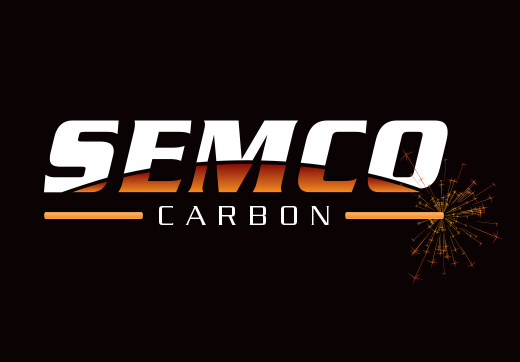
Advancements in Graphite Recycling : What You Need to Know
The Importance of Graphite Recycling
A question we often hear from customers: is graphite renewable? While graphite isn't renewable in the traditional sense—it's a carbon material formed over millions of years—the good news is that graphite can be recycled and reused effectively. As demand for graphite batteries and other applications continues to surge, recycling has become important for graphite producers facing supply chain challenges and sustainability pressures.
Recycling regulations in most places don’t stipulate that graphite must be recycled, but the graphite market has made recycling not just a priority for the environmentally minded, but also for the bottom lines of businesses from graphite producers to manufacturers who use graphite components.
In addition to the fundamental principle of reducing carbon footprints and reusing to conserve materials, the tax credit incentives are significant as well.
Under the Inflation Reduction Act (IRA), graphite recycling is eligible for several tax credits from the federal government designed to promote domestic manufacturing and supply chains for EV batteries, so every vice president and C-Suite executive is suddenly interested in this crucial aspect of their business.
Why Graphite Recycling Matters
 The demand for both natural and synthetic graphite spans multiple industries, from electric vehicles and EV batteries manufacturing to aerospace and metallurgy (including forming valuable metals) and a number of industries that rely heavily on lithium ion batteries. This increased demand has created supply chain constraints and exposed geopolitical risks that make recycling graphite particularly attractive as a solution to problems around supply.
The demand for both natural and synthetic graphite spans multiple industries, from electric vehicles and EV batteries manufacturing to aerospace and metallurgy (including forming valuable metals) and a number of industries that rely heavily on lithium ion batteries. This increased demand has created supply chain constraints and exposed geopolitical risks that make recycling graphite particularly attractive as a solution to problems around supply.
For graphite producers, recycling offers a way to reduce raw material costs while addressing environmental concerns. The process also helps mitigate the supply vulnerabilities that have plagued the graphite industry, particularly given China's dominance in synthetic graphite production and processing.
As we discussed in our previous blog on graphite recycling, the economic and environmental benefits of recovering and reusing graphite have made this a priority for many companies in the graphite supply chain.
Recent Advancements in Graphite Recycling
Recycling graphite hasn’t always been an obvious win-win, or even something people thought much about. Consider a blog we published several years ago about large graphite electrodes found in an Iowa cornfield. The last few years have brought significant improvements in graphite recycling technology, making the process more efficient and economically viable. Few today would leave such a cache of this precious material to moulder in a cornfield.
Thermal and Chemical Purification methods have improved dramatically, particularly for removing impurities from spent graphite commercial and EV batteries. These advanced techniques can restore recycled graphite to near-virgin quality, making it suitable for demanding applications that previously allowed for only new material.
Strong acids are sometimes used in graphite recycling from lithium ion batteries (LIBs) to remove impurities like cathode metals, but they can damage the graphite's structure. This has led to the development of greener, more efficient methods of recycling lithium ion batteries, such as using low-concentration citric acid or other organic acids, or employing innovative direct recycling processes that avoid harsh chemical treatments and focus on physical separation and lower-temperature thermal or catalytic processes.
Closed-Loop Battery Recycling represents perhaps the most significant advancement in the field of graphite recycling. Have you ever pulled spent batteries out of a flashlight and wondered what to do with them, vaguely aware that you shouldn’t just toss them in the trash? The question of what to do with spent graphite batteries is now not such a mystery, New processes can achieve high-yield recovery of graphite anodes from spent batteries from electric vehicles and consumer batteries, creating a direct path from used batteries back to new battery production. The only trick now will be to educate battery users (read: just about everyone) about what to do with their spent electric vehicle batteries, lithium ion batteries, and all others for that matter.
Mechanical Separation Technologies have also evolved, with innovations in crushing, sieving, and flotation making graphite recovery more efficient and scalable. These improvements reduce processing costs and increase the amount of usable graphite recovered from waste streams.
Sustainable Processing has become a focus area, with companies developing low-energy and solvent-free methods that reduce the environmental impact of the recycling process itself. These developments address one of the criticisms of early recycling efforts—that the process consumed too much energy to be truly sustainable. Now, the answer to the question “is graphite renewable?” is closer to “yes” than it has ever been.
What Industrial Companies Need to Know
For companies that use graphite components or are involved in graphite production, several considerations have emerged from these recycling advancements.
Material Traceability has become important. Recycled graphite must meet strict quality and consistency standards set by recycling regulations, especially for high-performance applications. Companies need systems that accurately track the source and processing history of recycled materials so that material can be put back in the manufacturing stream.
Battery-Grade Recovery opportunities are expanding rapidly in the EV sector. As technologies improve graphite purity levels in recycled materials, more applications become viable for reuse in battery anodes—a high-value market that will no doubt continue to grow.
Recycling Regulations continue evolving at regional levels, with new policies promoting battery recycling, material reuse, and waste reduction. Companies need to stay informed about these changing requirements to remain compliant and take advantage of potential incentives.
Market Demand for recycled graphite is growing across industries including lubricants, refractories, and composites. This expanding acceptance creates new opportunities for companies that can produce high-quality recycled materials.
Cost Savings and ESG Benefits make recycling attractive from both financial and sustainability perspectives. Incorporating recycled graphite can improve profit margins while supporting environmental, social, and governance goals that truly matter to customers and investors. Think of the graphics on many paper products that indicate the paper derives from recycled material. The piece of mind this brings to consumers is nothing to shake a stick at.
The Future of Graphite Recycling
At Semco Carbon, we stay on top of these recycling developments. While we don't currently operate recycling facilities, we recognize that recycled graphite may become an increasingly important part of the supply chain for graphite components, especially as more and more electric vehicles find themselves on the roads and industries that rely heavily on graphite components (everything from lithium ion batteries to graphite crucibles and molds) seek out unique ways to take advantage of the benefits and tax incentives offered by recycling graphite.
The advancements in recycling technology suggest that the question "is graphite renewable?" may soon have a more nuanced answer. While graphite itself isn't renewable, our ability to recycle and reuse it effectively is creating a more sustainable approach to graphite consumption.
As recycling technologies continue to improve and regulations evolve, companies throughout the graphite supply chain will need to adapt their strategies to incorporate recycled materials to reduce their carbon footprints and take advantage of the many financial benefits. Those who embrace these changes early may find themselves with competitive advantages in both cost and sustainability—two important factors in today's market.

Vince President
